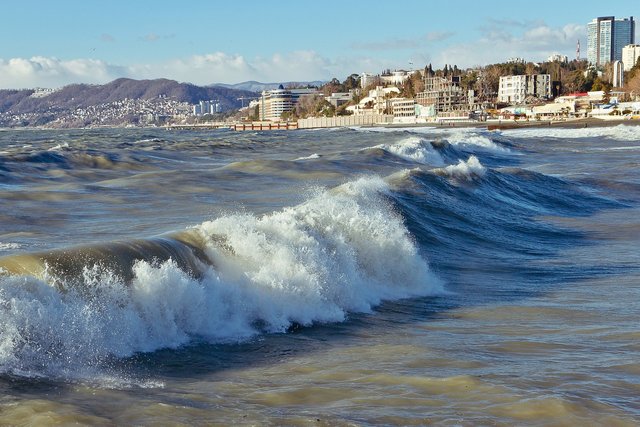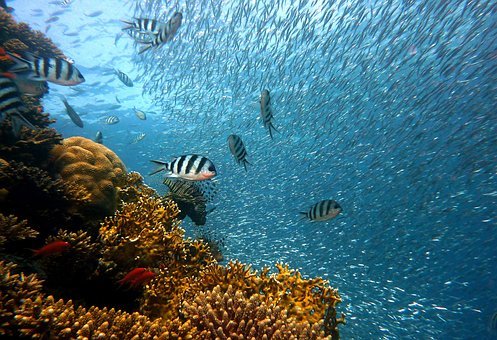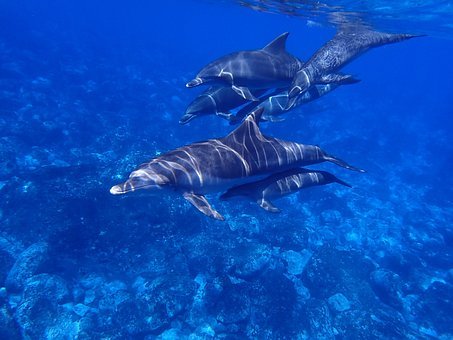
As a lover of nature, I have always been fascinated by the ocean and the vast array of life that it contains. The oceans cover over 70% of the Earth's surface and are home to countless species of sea creatures, making them one of the most diverse and fascinating ecosystems on the planet. In this article, we will explore the wonders of the oceans and take a journey through the world of the sea.
Introduction to the Wonders of the Oceans
The oceans are a source of endless wonder and mystery. They have captivated human beings for centuries, inspiring countless works of art, literature and music. But beyond their aesthetic beauty, the oceans are also vital to life on Earth. They regulate the temperature of the planet, support a massive food chain, and produce over half of the world's oxygen.
The oceans are home to a wide range of habitats, from the sun-drenched coral reefs of the tropics to the dark, frigid depths of the abyssal zone. Each of these habitats is home to a unique collection of creatures that have adapted to their specific environment. From tiny plankton to massive whales, the oceans are teeming with life.
Exploring the Different Habitats of the Ocean
The oceans are divided into five main zones based on depth and light levels: the epipelagic zone (0-200m), the mesopelagic zone (200-1000m), the bathypelagic zone (1000-4000m), the abyssopelagic zone (4000-6000m), and the hadalpelagic zone (deeper than 6000m). Each of these zones has its own unique characteristics and inhabitants.
The epipelagic zone, also known as the sunlit zone, is the most shallow and well-lit of the ocean zones. It is home to a wide range of sea creatures, including sharks, dolphins, sea turtles, and coral reefs. The mesopelagic zone, also known as the twilight zone, is an area of low light and is home to creatures like lanternfish, squid, and jellyfish. The bathypelagic zone is home to deep-sea creatures like giant squid, anglerfish, and bioluminescent jellyfish. The abyssopelagic zone is home to creatures like deep-sea crabs, tube worms, and sea cucumbers. The hadalpelagic zone, which includes the deepest parts of the ocean, is home to unique creatures like the Mariana snailfish and the Dumbo octopus.
Fascinating Sea Creatures and Their Characteristics

The oceans are home to an incredible variety of sea creatures, each with their own unique characteristics and adaptations. Some of the most fascinating sea creatures include:
Whales: These massive marine mammals are some of the largest animals on Earth. They are known for their intelligence, social behavior, and unique vocalizations.
Sharks: These fearsome predators have been around for over 400 million years. They have a unique ability to sense electrical fields and are able to detect prey with incredible accuracy.
Octopuses: These intelligent creatures are known for their ability to change color and shape-shift to avoid predators. They are also incredibly skilled at problem-solving and have been observed using tools to obtain food.
Jellyfish: These simple creatures are found in every ocean on Earth. They are known for their stinging tentacles and come in a wide variety of shapes and sizes.
The Most Commonly Found Animals in the Ocean

While the oceans are home to an incredible variety of creatures, there are a few species that are particularly common. Some of the most commonly found animals in the ocean include:
Krill: These tiny crustaceans are a vital part of the ocean food chain. They are a primary food source for many larger creatures, including whales, penguins, and seals.
Tuna: These fast-swimming fish are found in oceans all over the world. They are a popular target for commercial fishing and are prized for their meat.
Clams: These bivalve mollusks are found in a variety of ocean habitats. They are filter feeders, meaning they filter food particles from the water using their gills.
Seagulls: These ubiquitous birds are found in coastal areas all over the world. They are opportunistic feeders and will eat a wide variety of foods, from fish to garbage.
Top Destinations for Marine Life Enthusiasts – Florida and Beyond
For those who are interested in exploring the wonders of the ocean, there are many destinations that offer incredible opportunities to see marine life up close. One of the top destinations for marine life enthusiasts is Florida. The state is home to a wide range of sea creatures, including manatees, dolphins, sea turtles, and sharks.
Other top destinations for marine life enthusiasts include Hawaii, Australia's Great Barrier Reef, and the Galapagos Islands. Each of these destinations offers a unique collection of marine species and habitats, and provides opportunities for snorkeling, diving, and other ocean activities.
How to Get Involved in Ocean Conservation Efforts
As we explore the wonders of the oceans, it's important to remember that these ecosystems are also incredibly fragile. Human activity, including pollution, overfishing, and climate change, has had a devastating impact on the ocean environment.
Fortunately, there are many ways to get involved in ocean conservation efforts. One of the most important things you can do is to reduce your use of single-use plastics, which are a major contributor to ocean pollution. You can also support organizations that are working to protect marine ecosystems, such as the Marine Conservation Institute, Oceana, and the Ocean Conservancy.
Conclusion: The Beauty and Fragility of the Ocean Environment
The oceans are a source of endless wonder and beauty, but they are also incredibly fragile. As we explore the world of the sea, it's important to remember that our actions can have a profound impact on these ecosystems. By getting involved in ocean conservation efforts and making small changes in our daily lives, we can help to protect the oceans and the amazing creatures that call them home.
CTA:
If you're interested in learning more about ocean conservation efforts or exploring the wonders of the sea, there are many resources available online. Consider checking out some of the organizations mentioned in this article or planning a trip to one of the top marine life destinations. Together, we can help to ensure that the oceans remain a source of wonder and inspiration for generations to come.